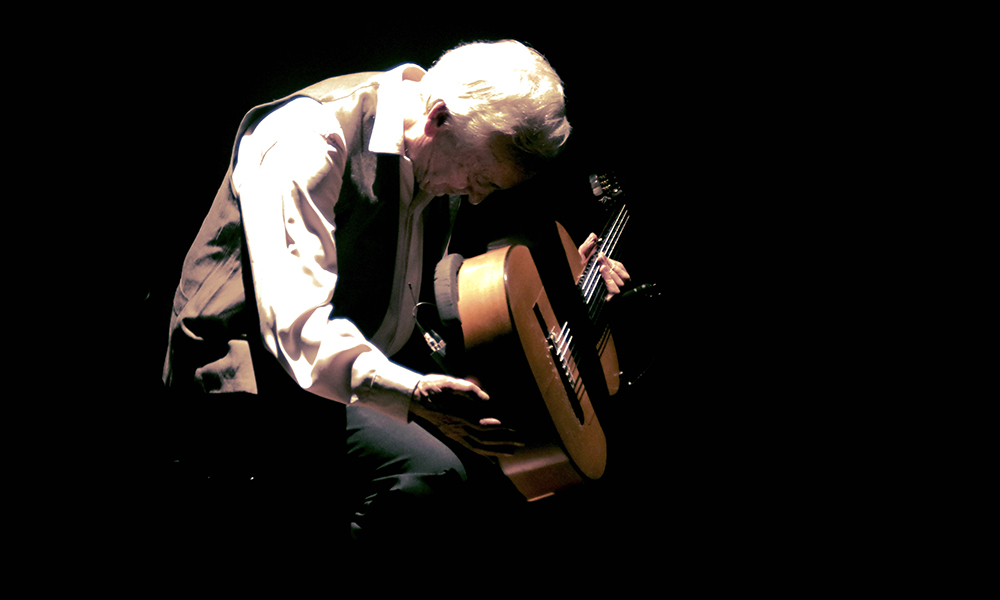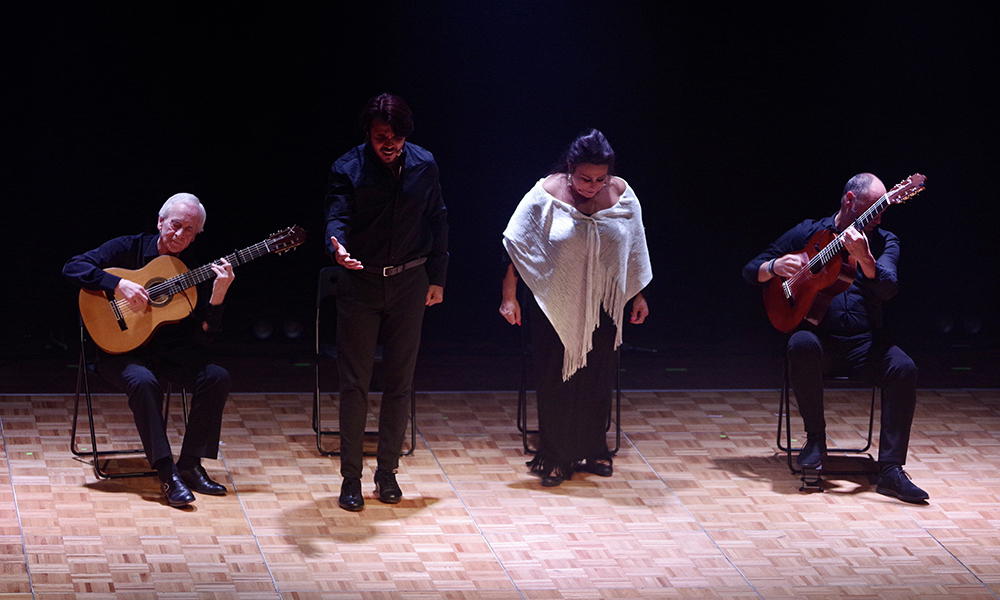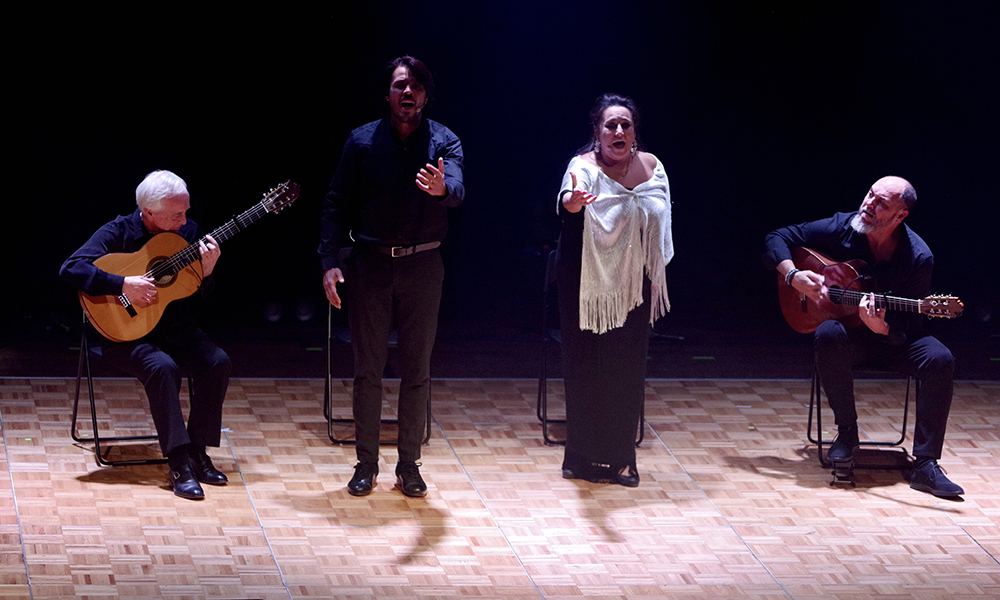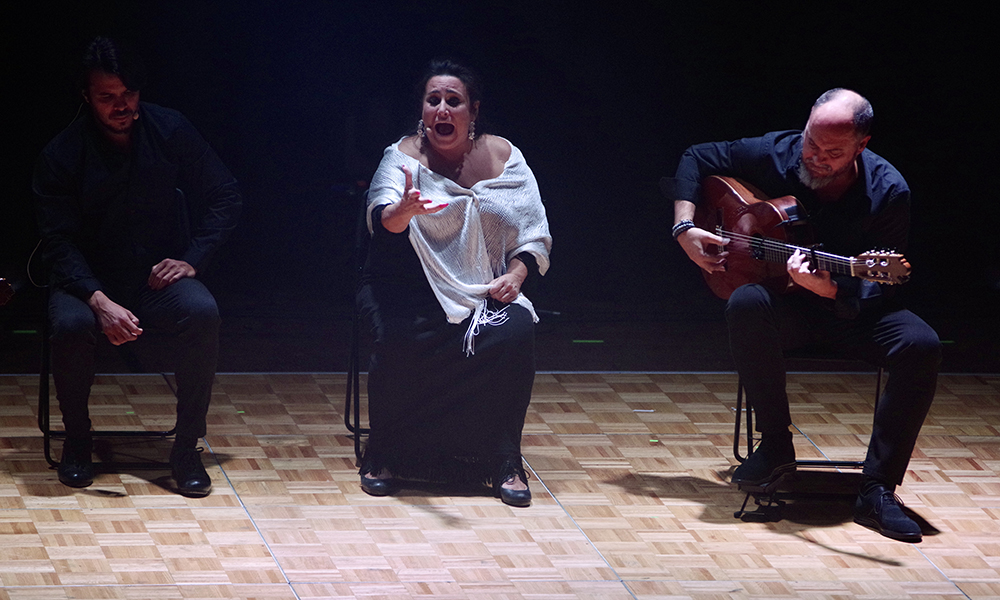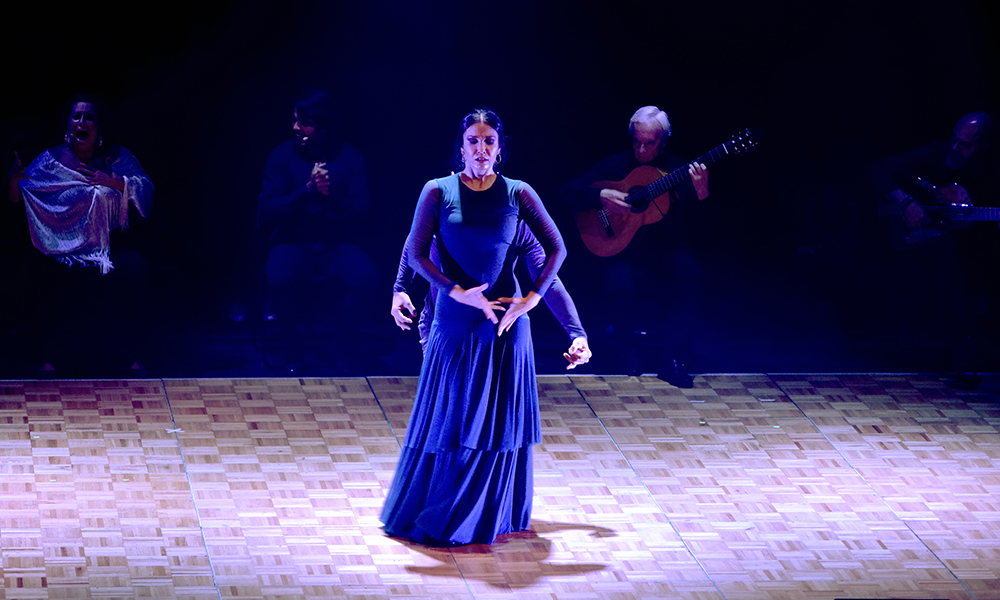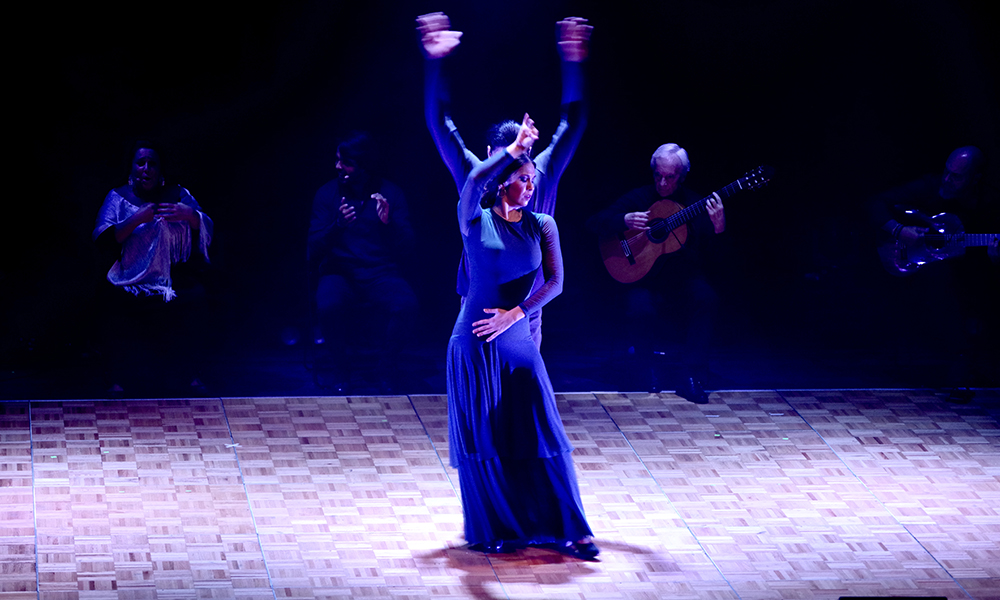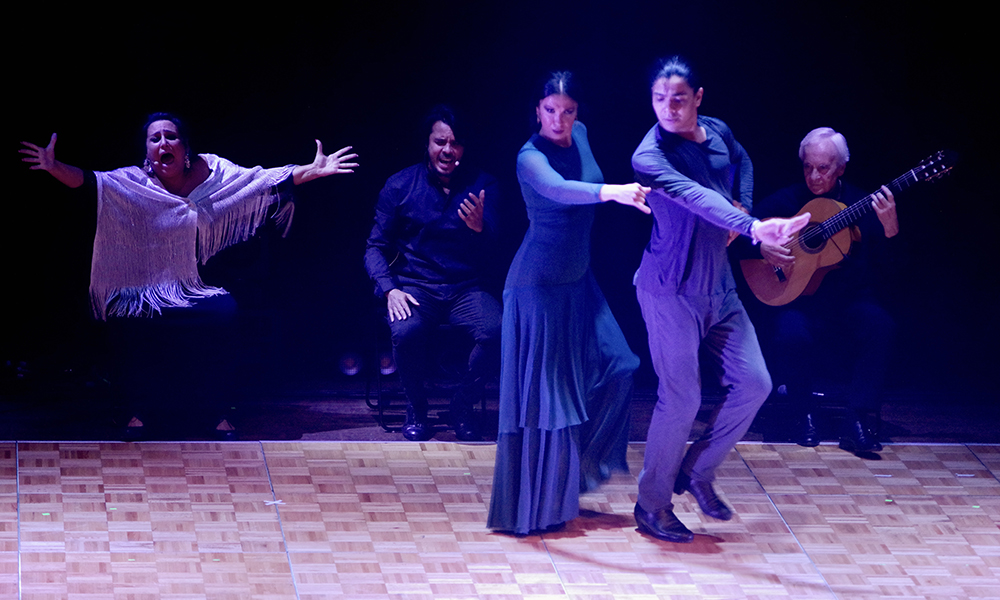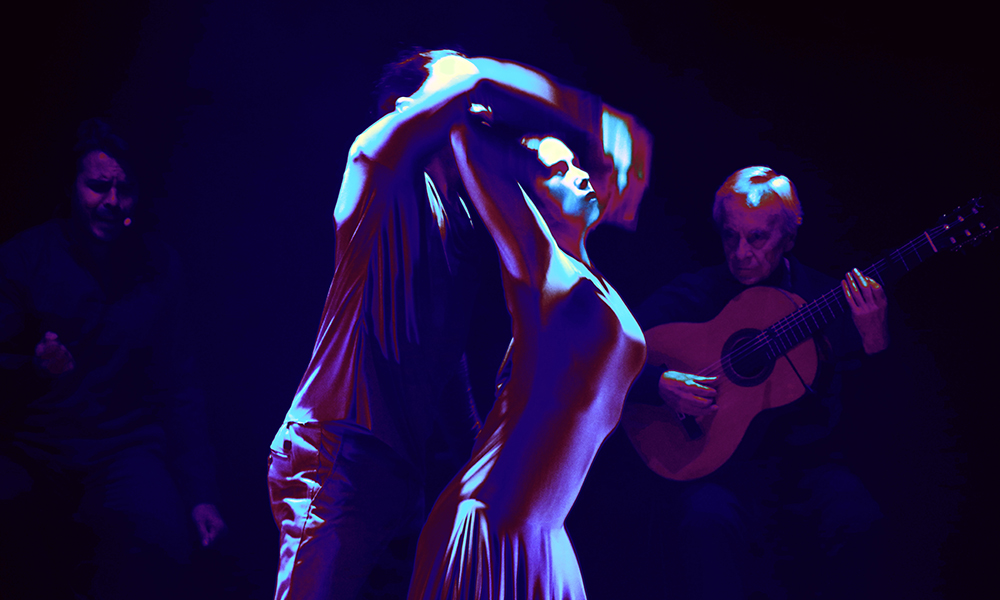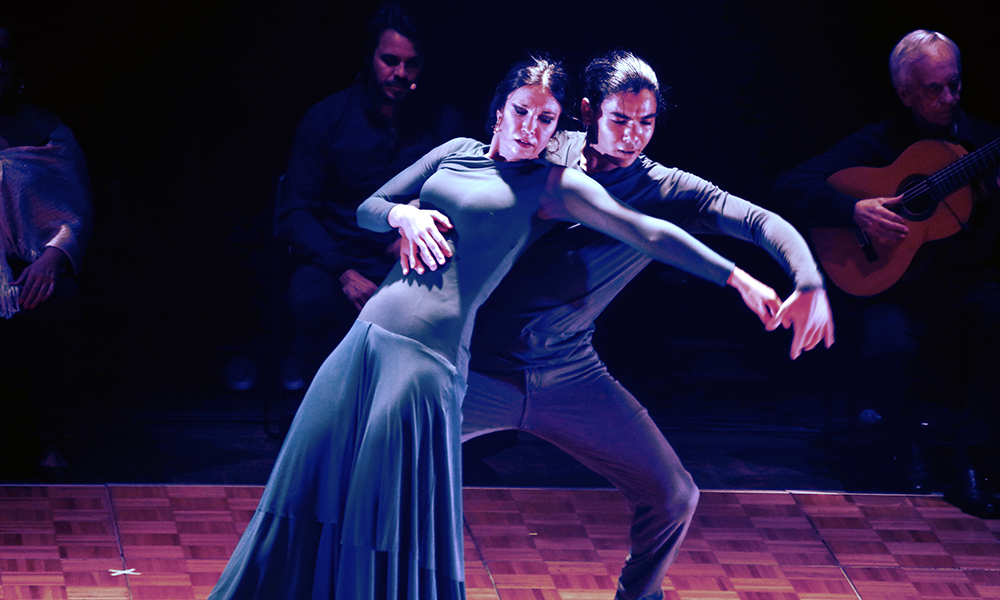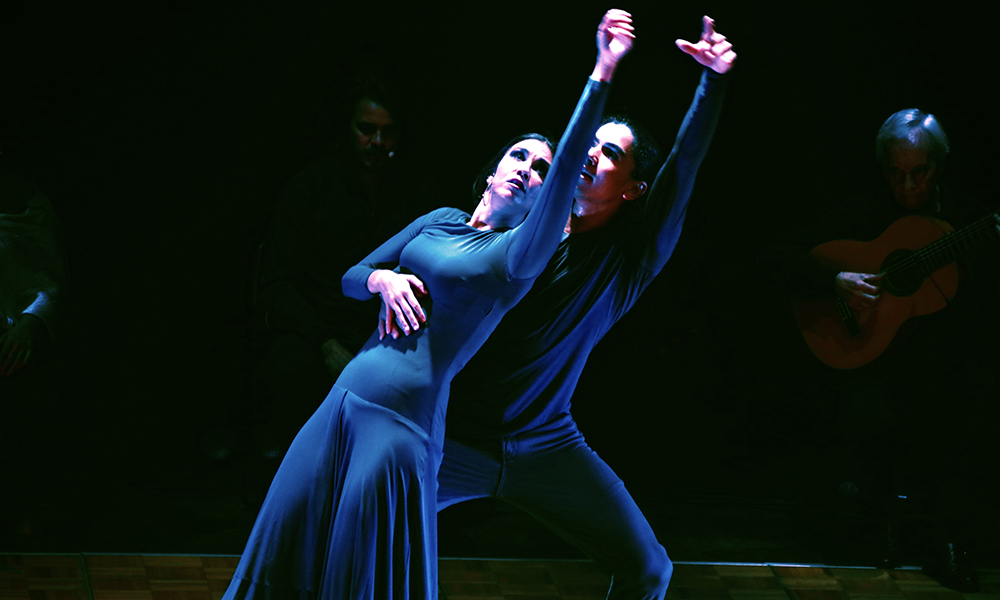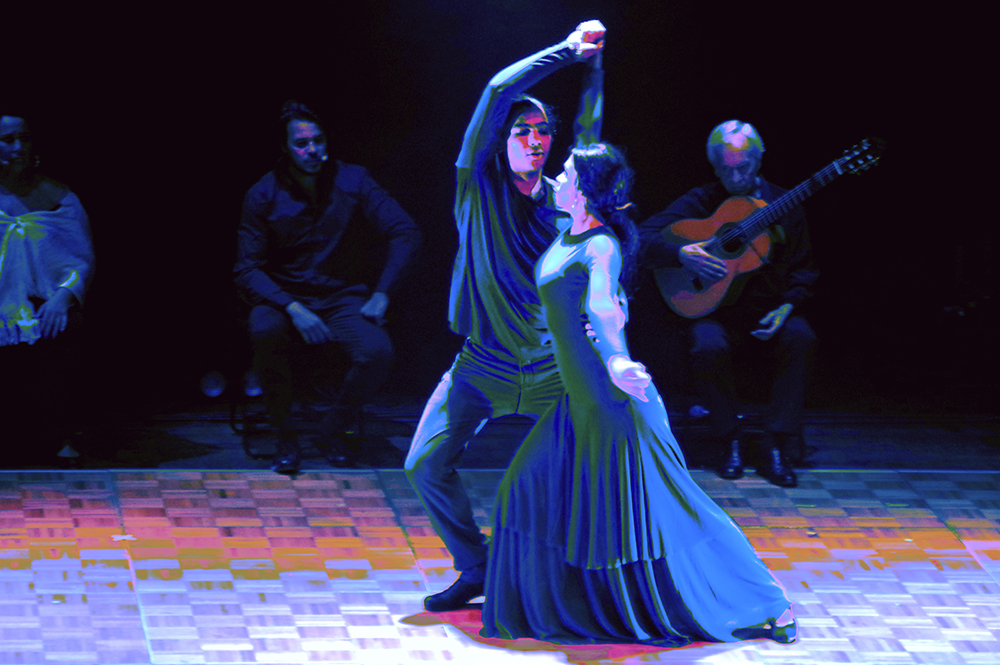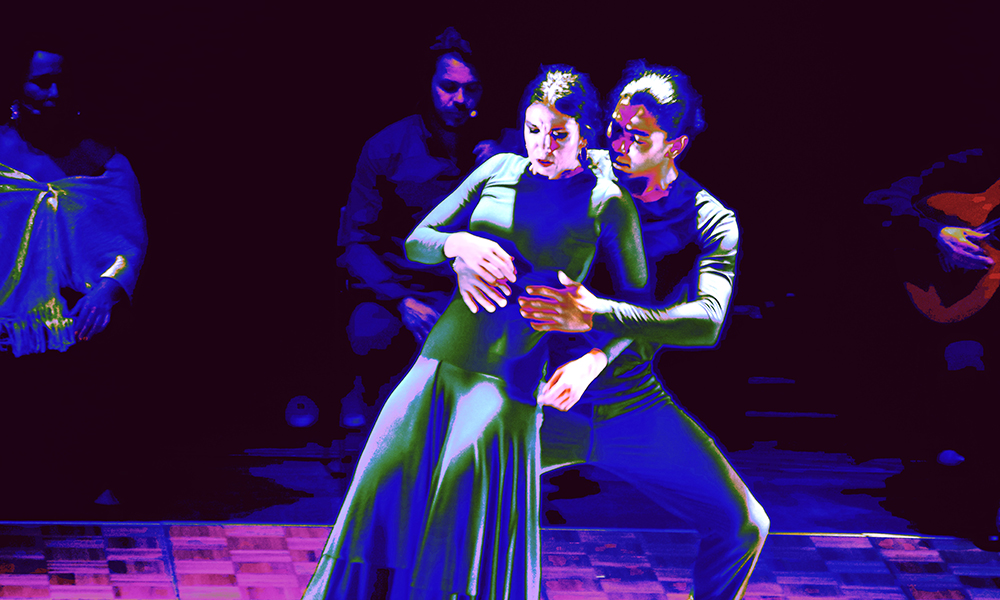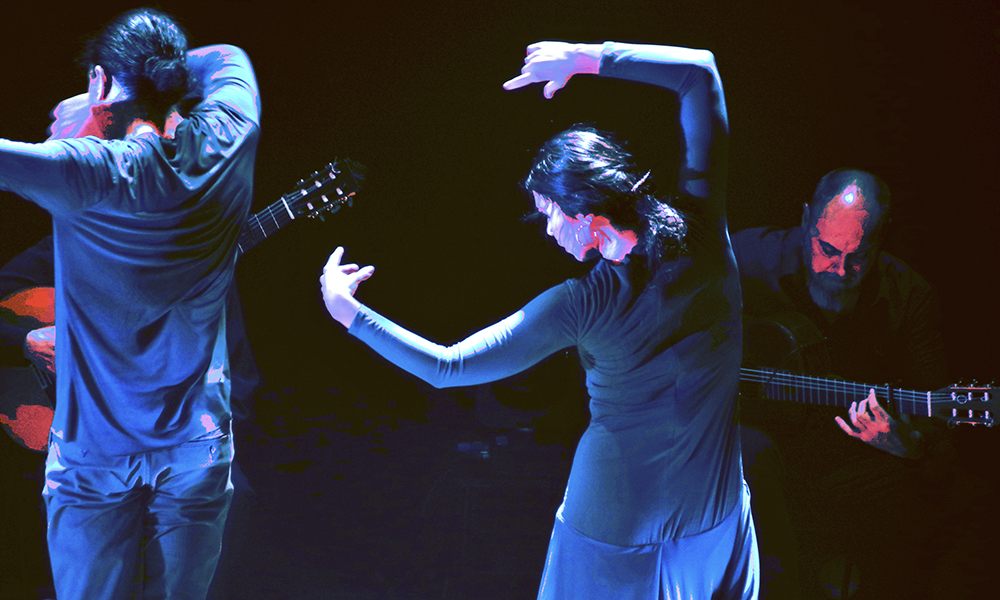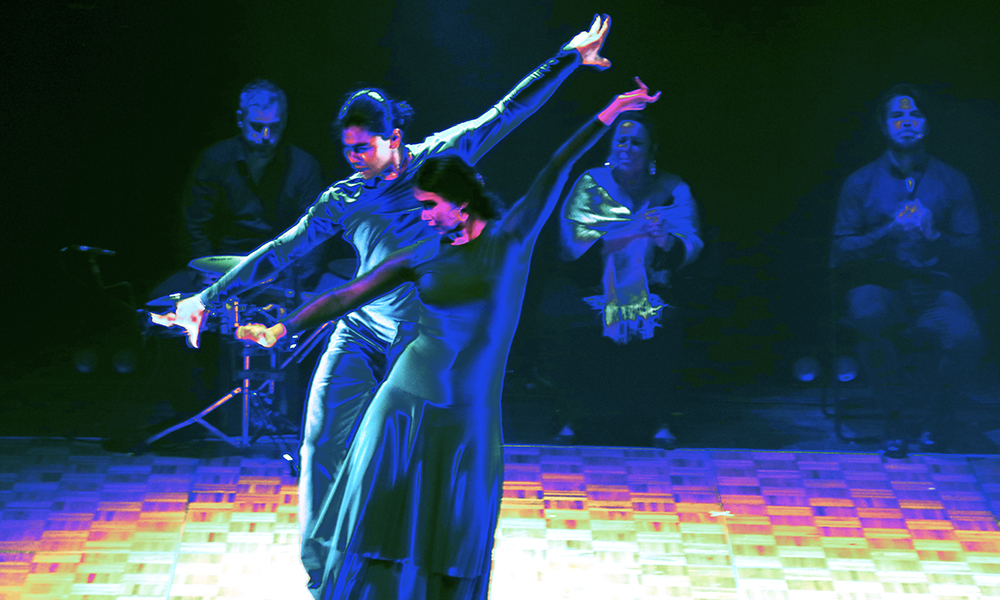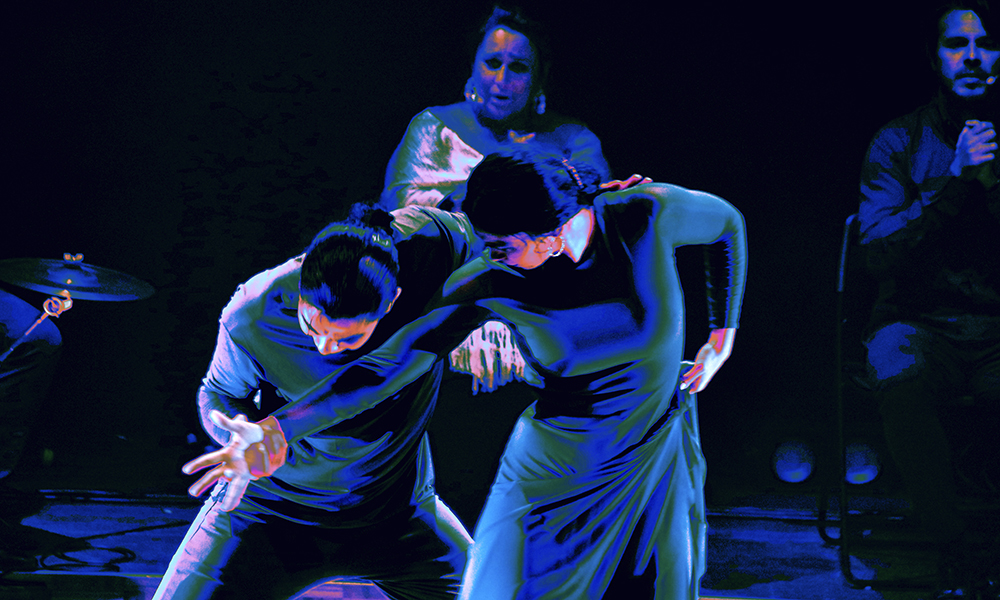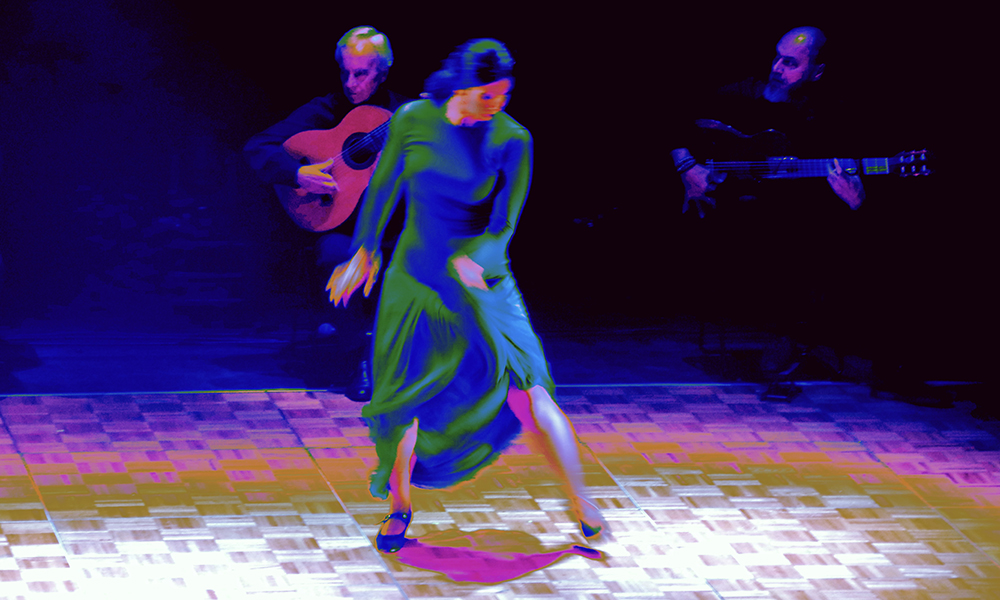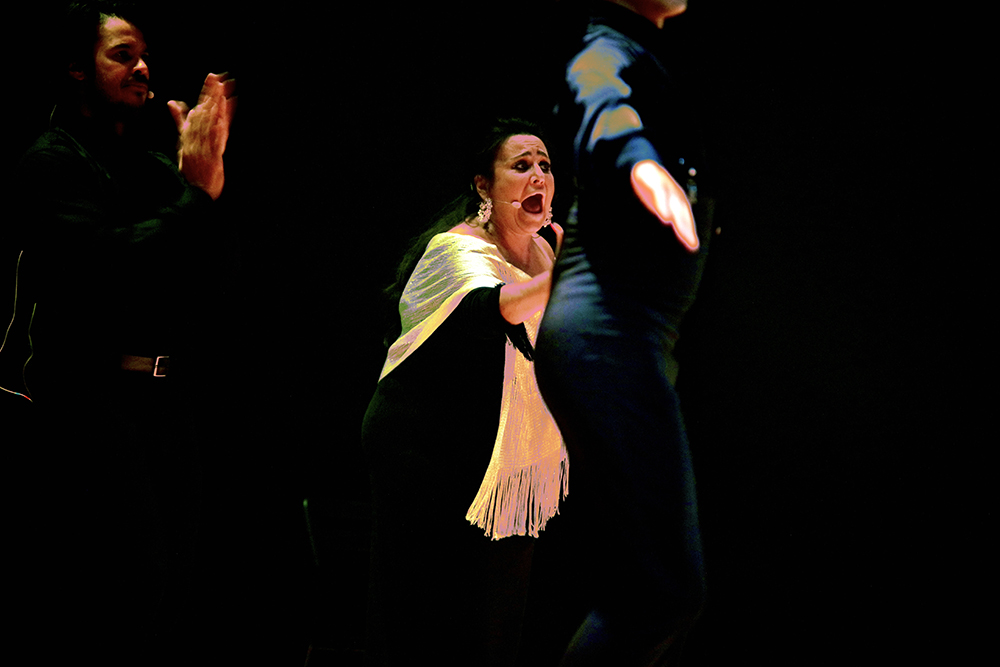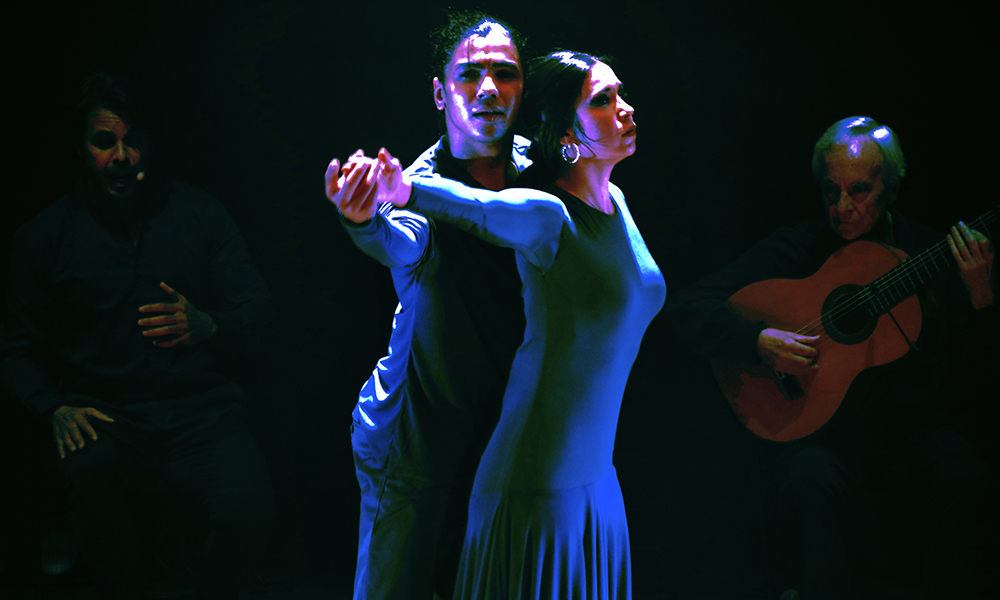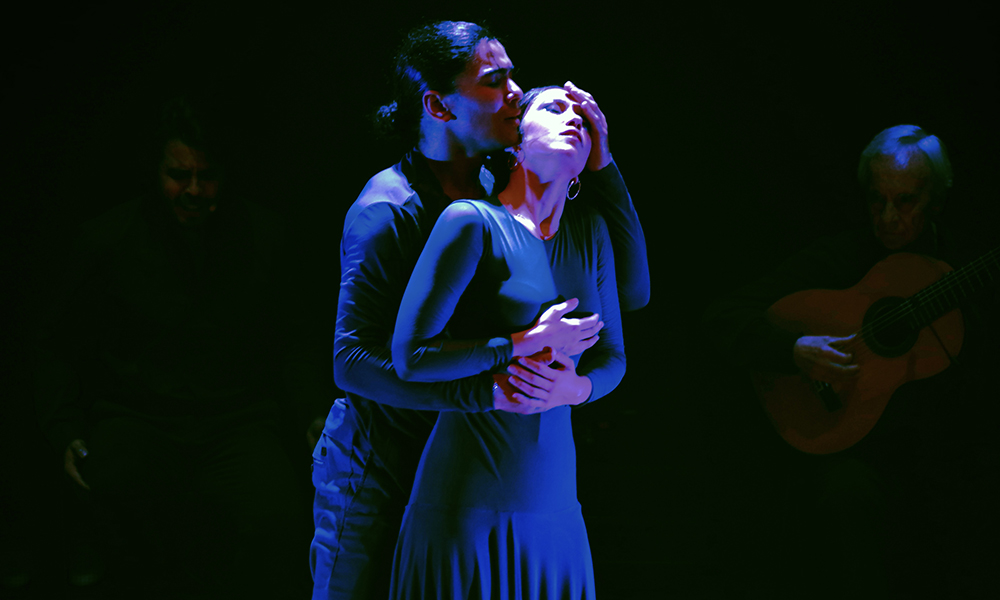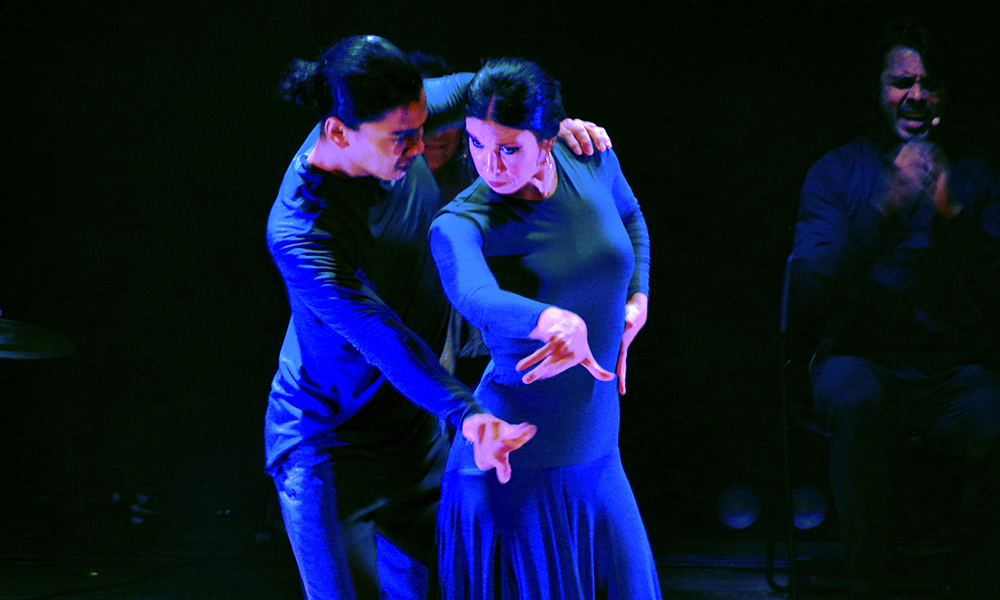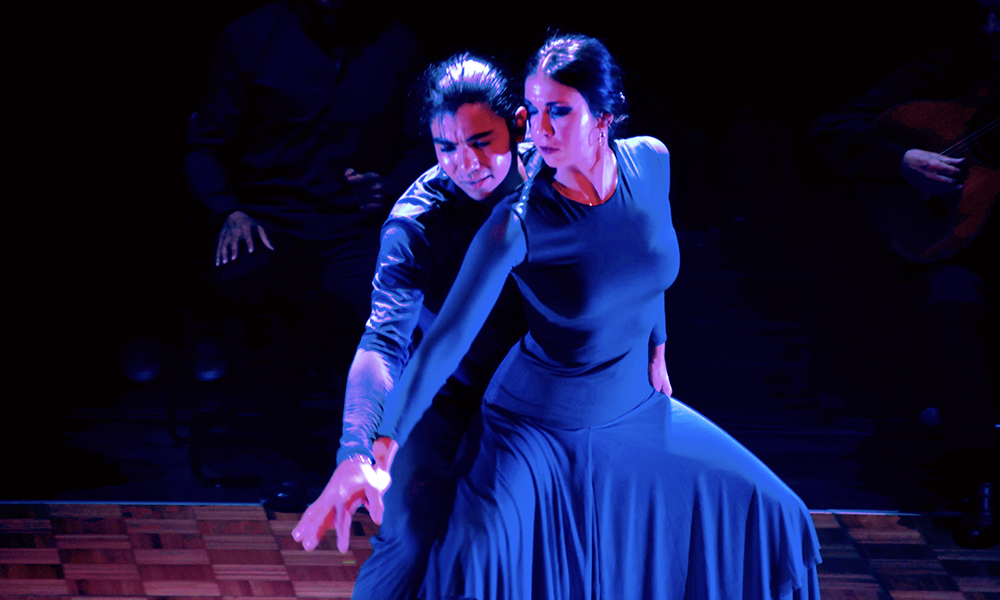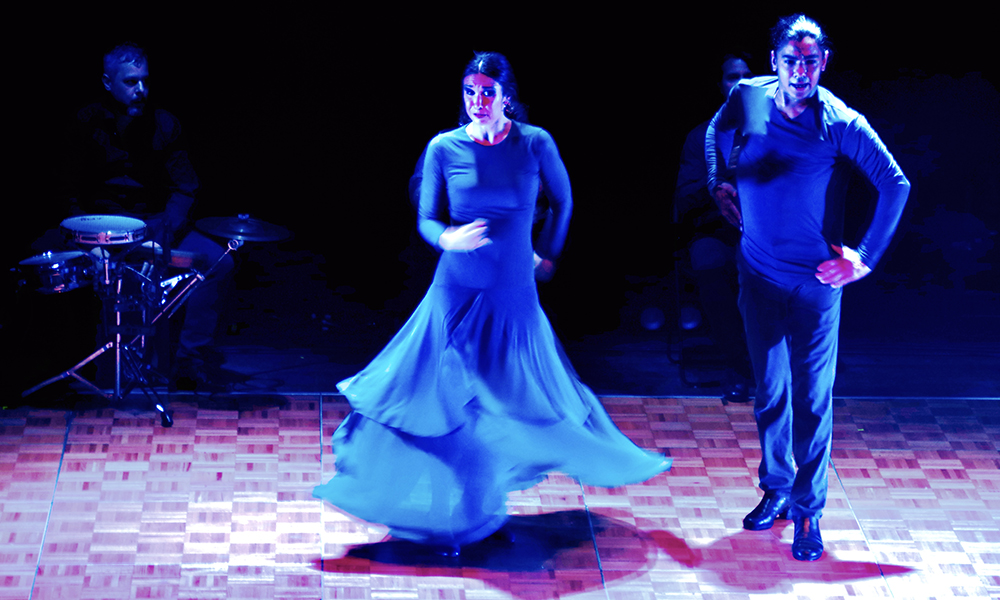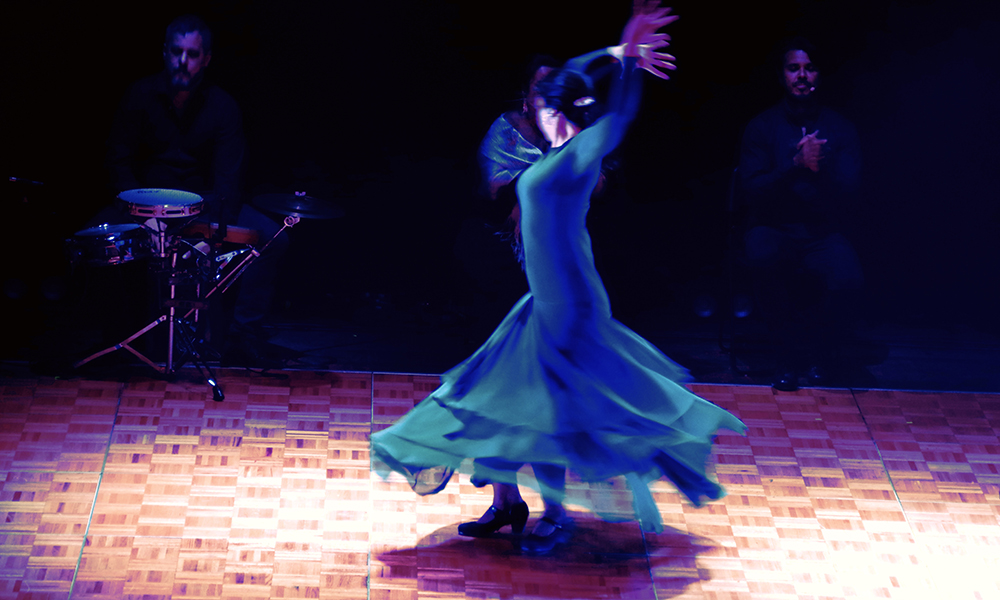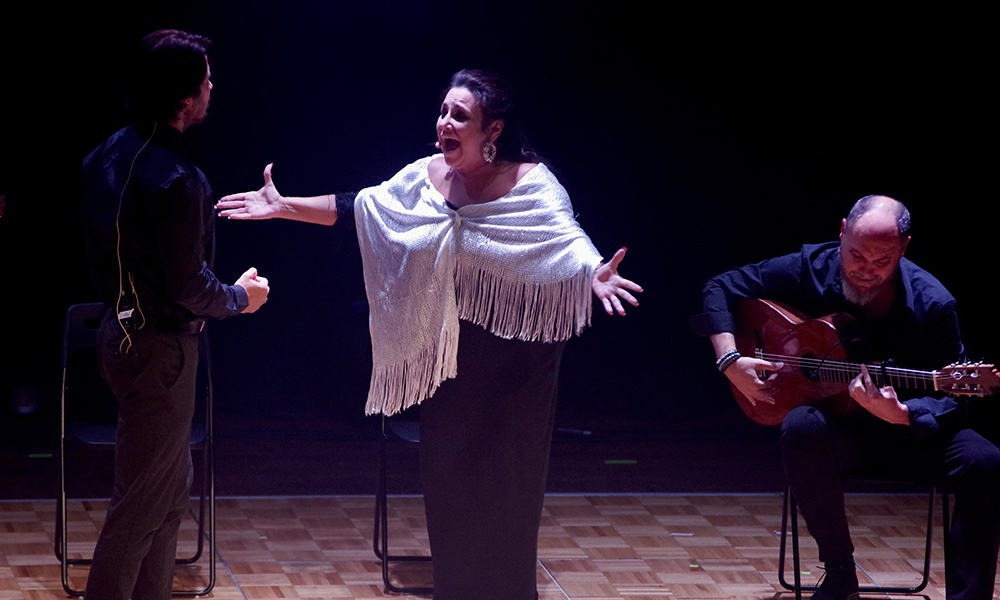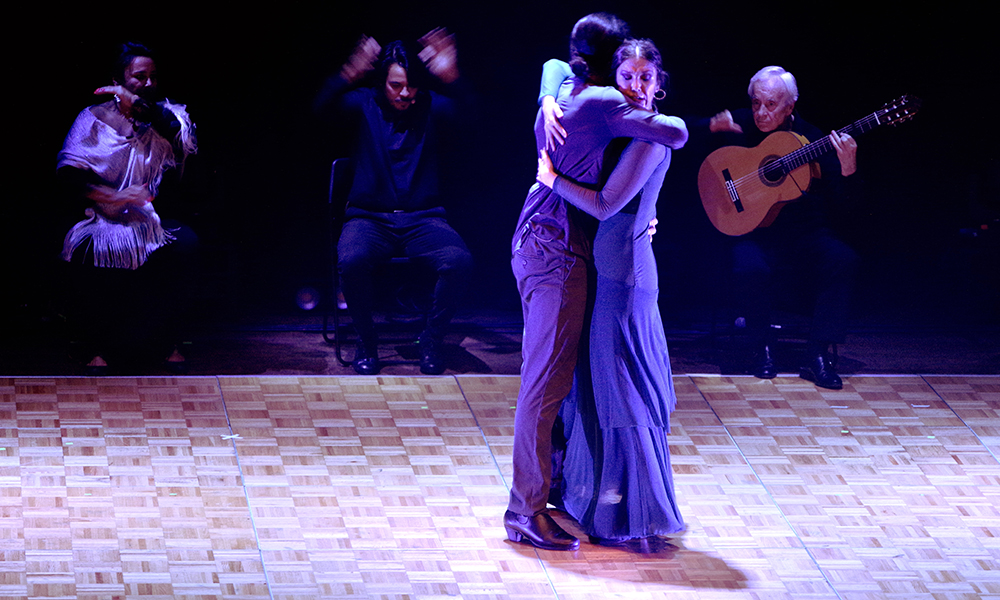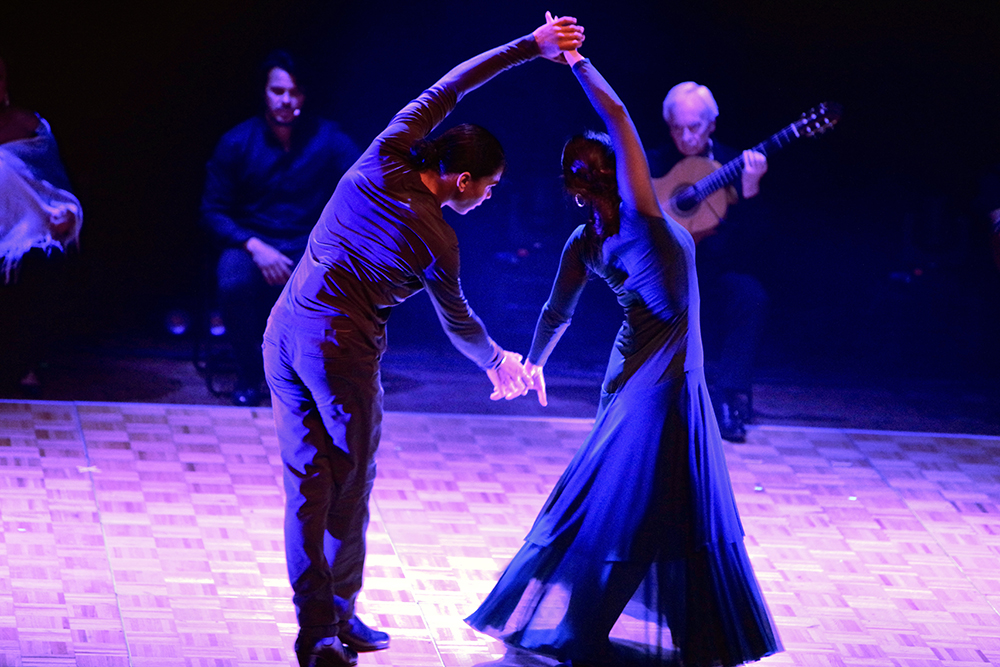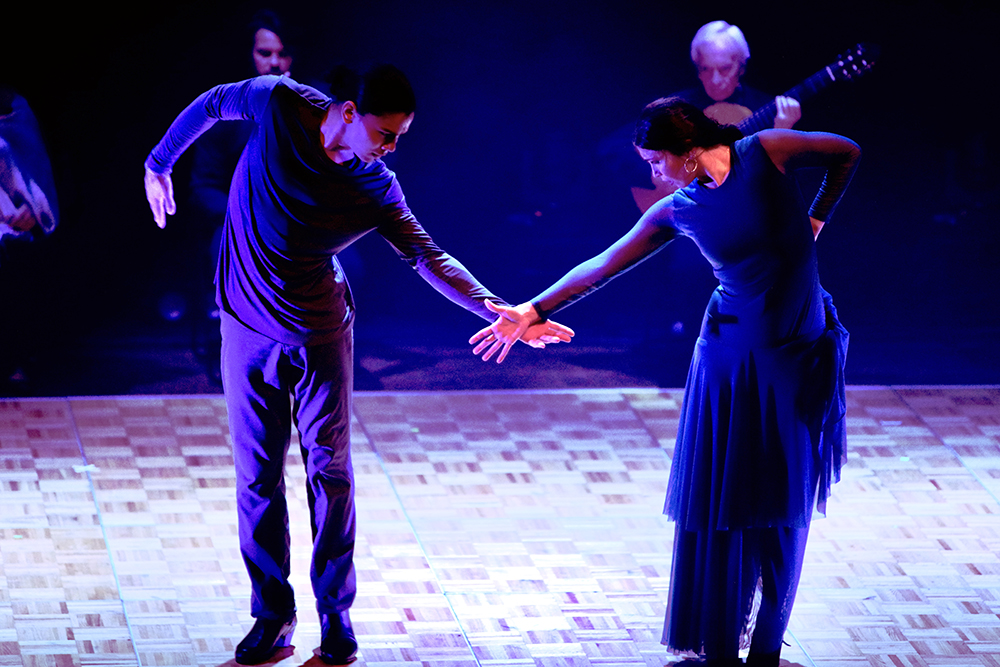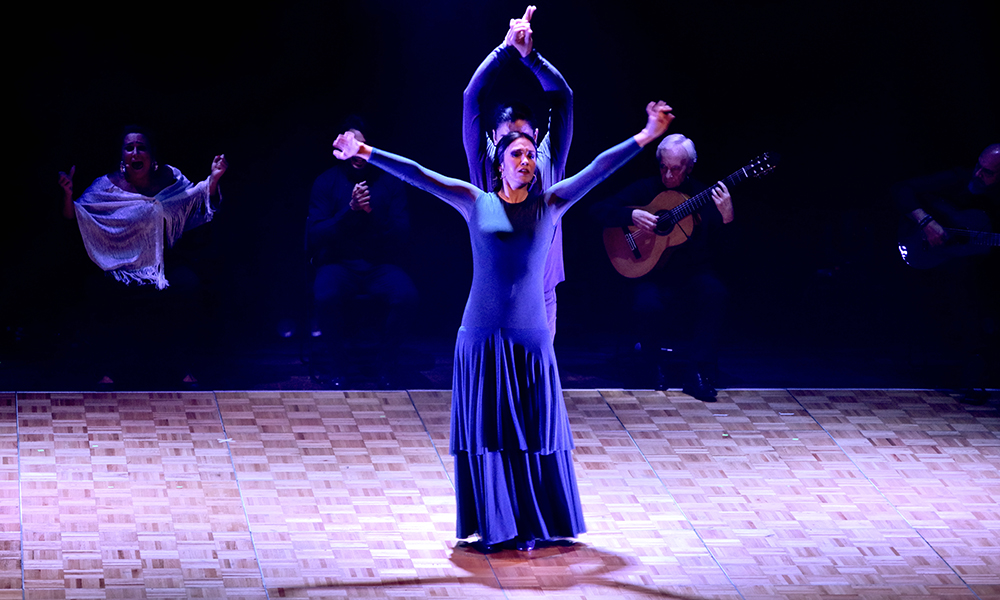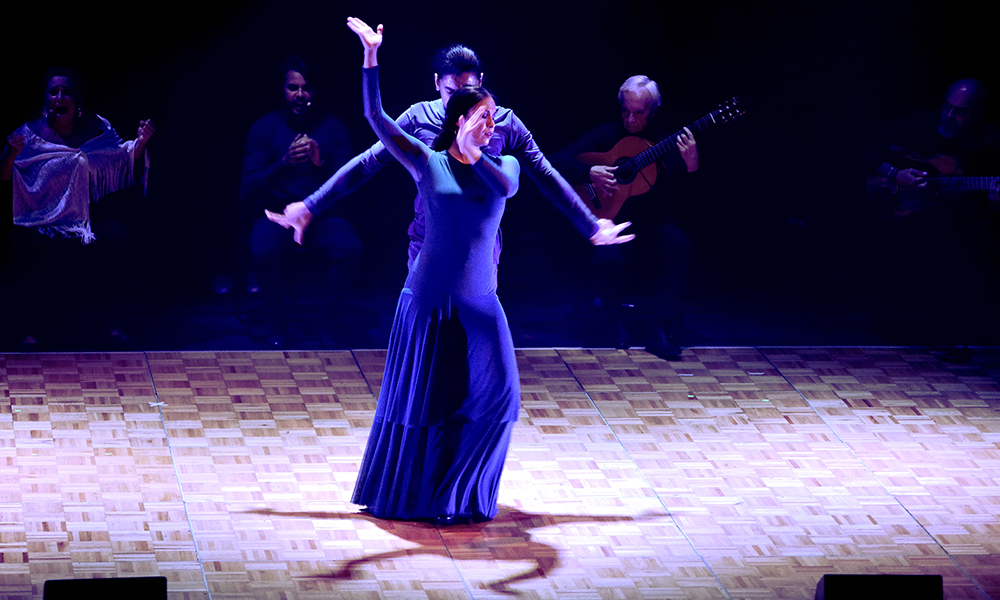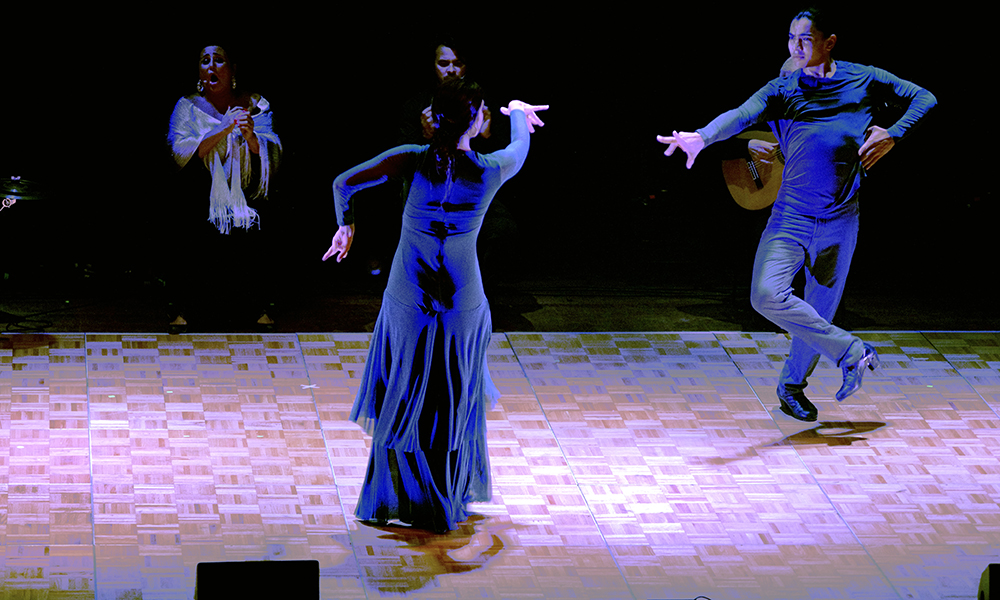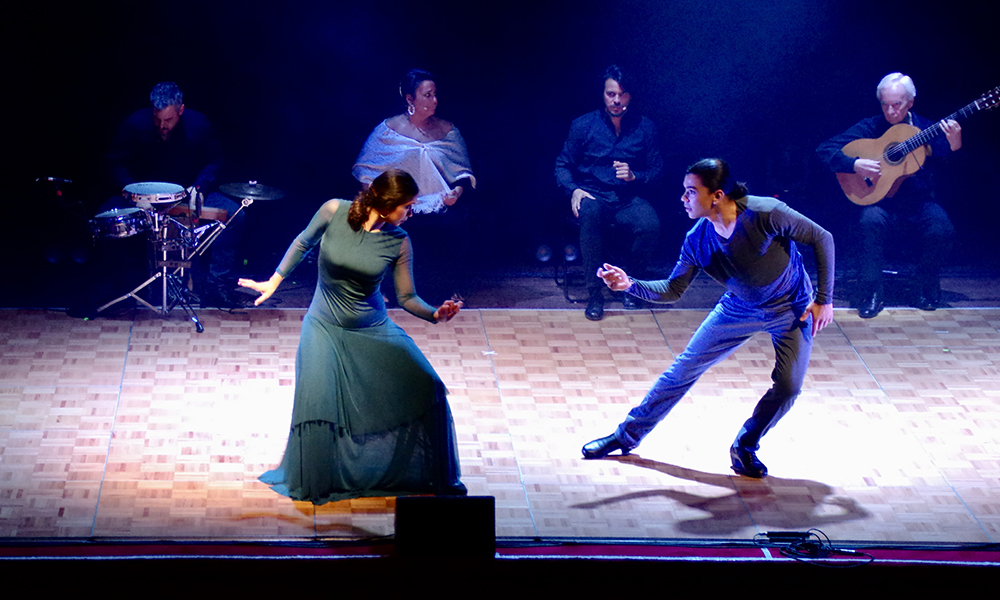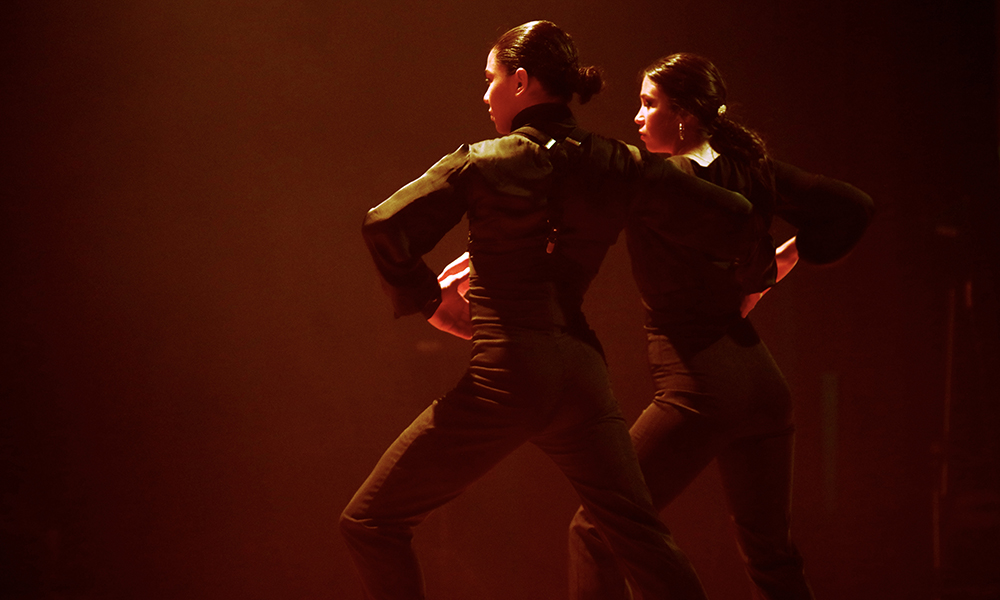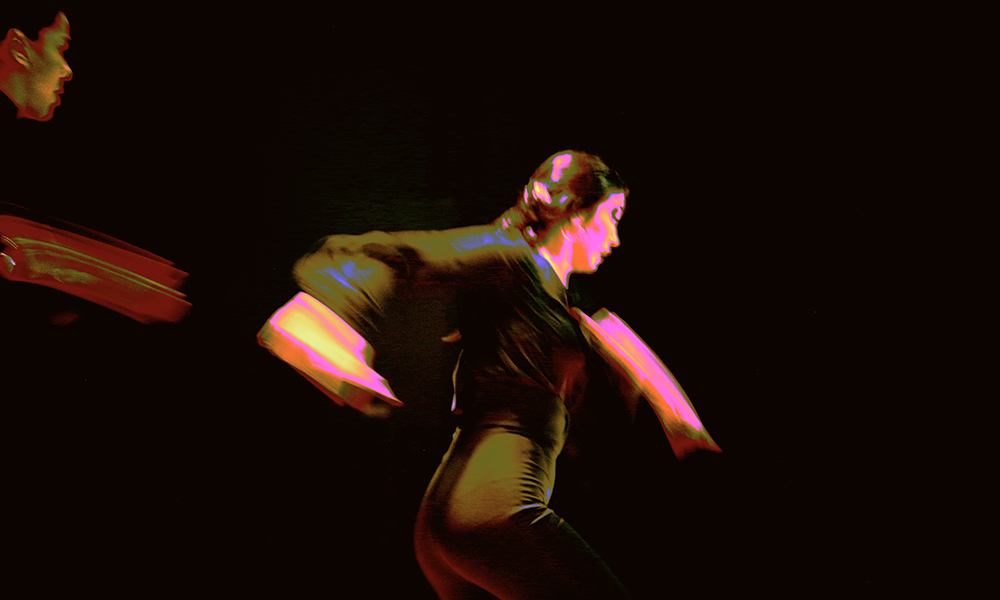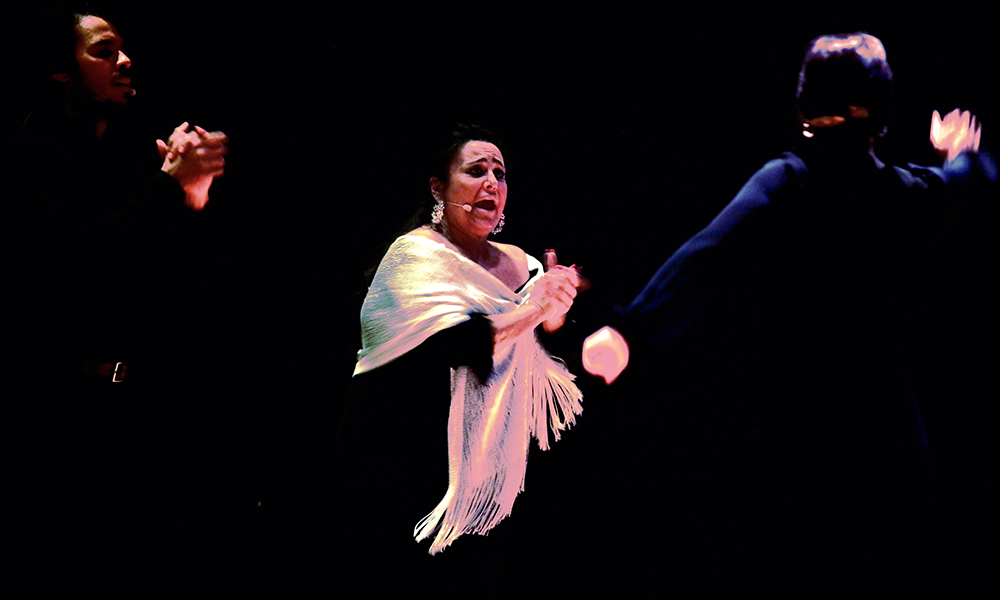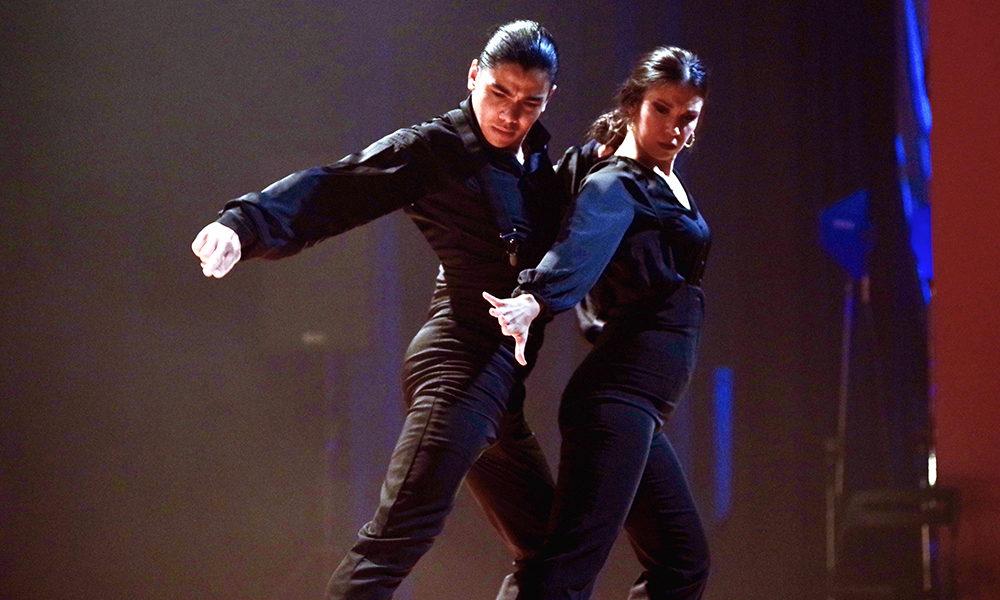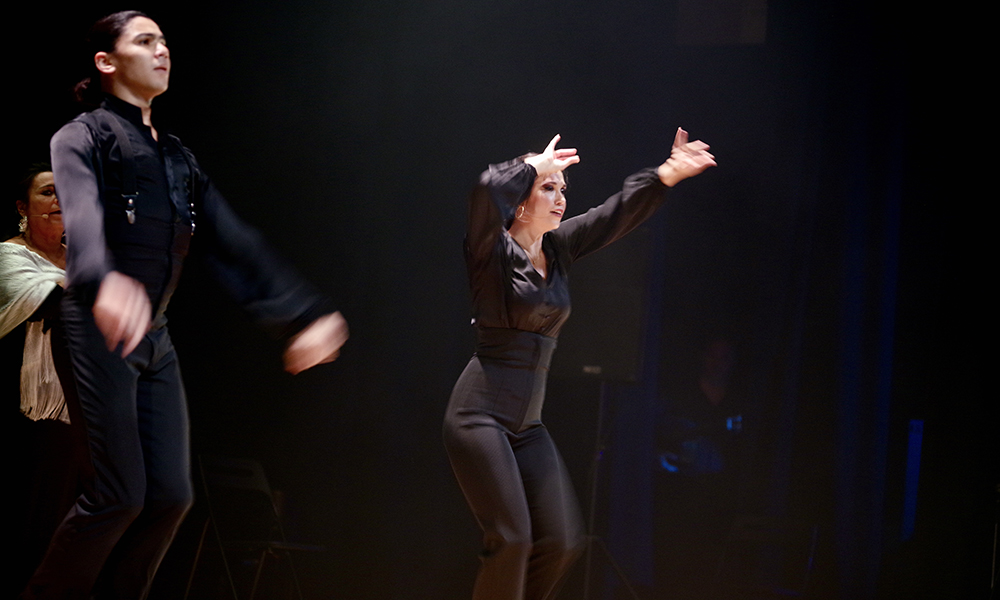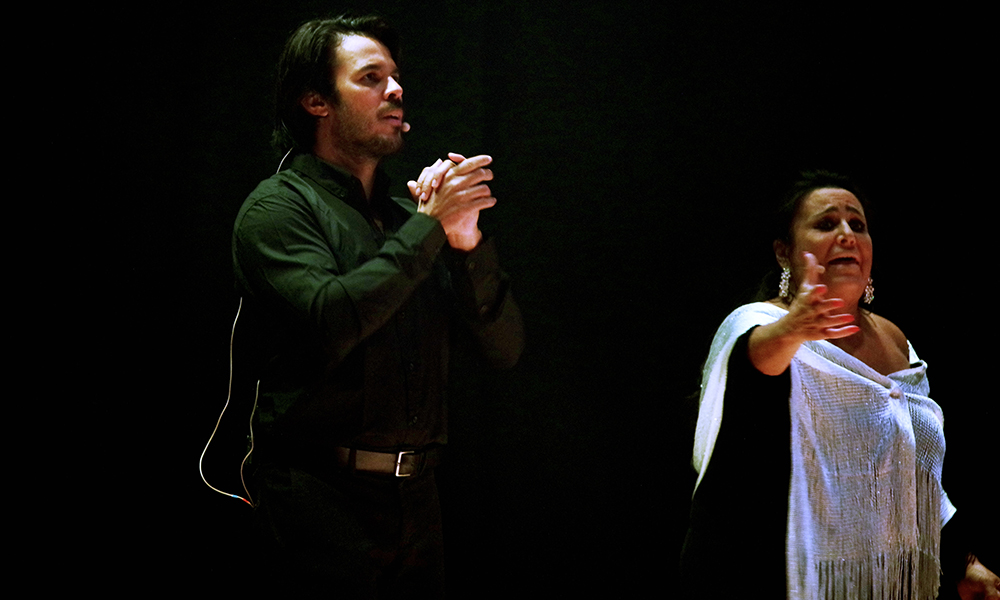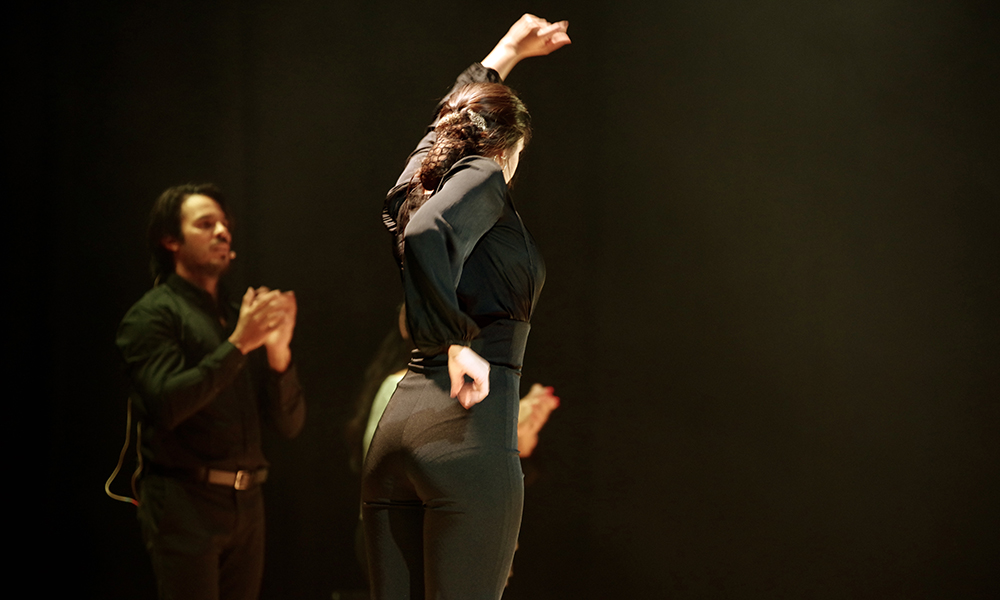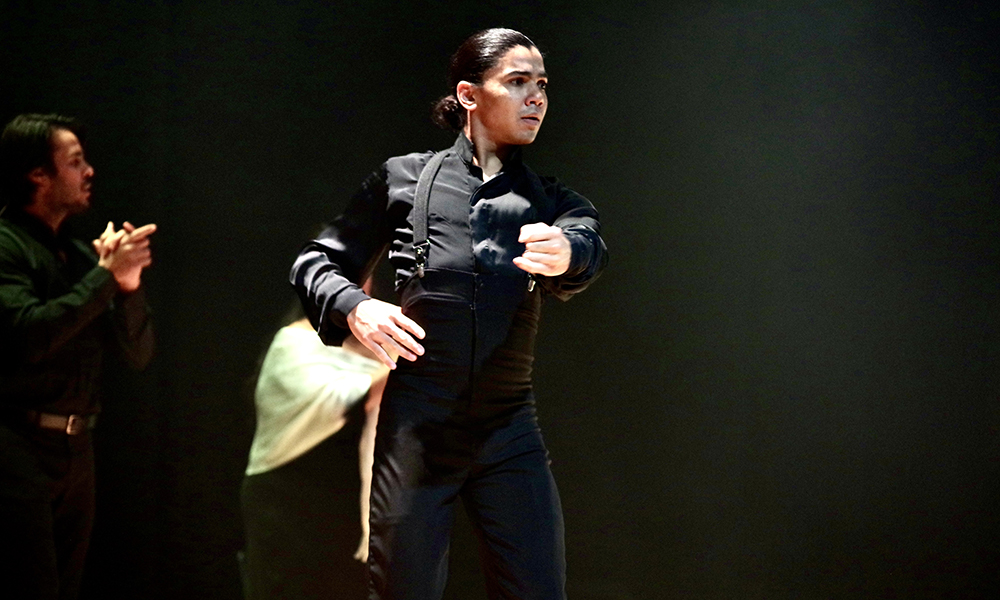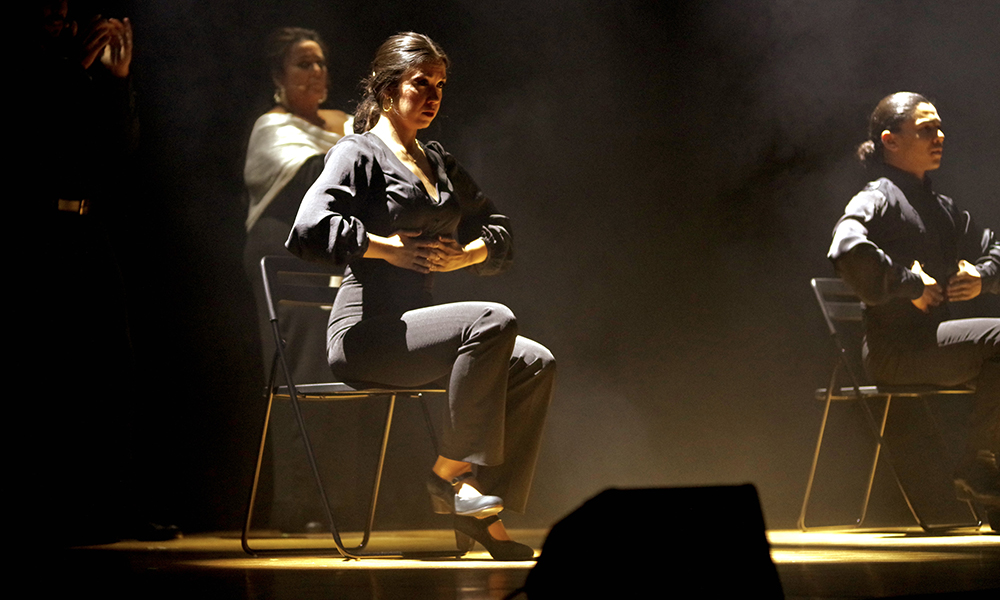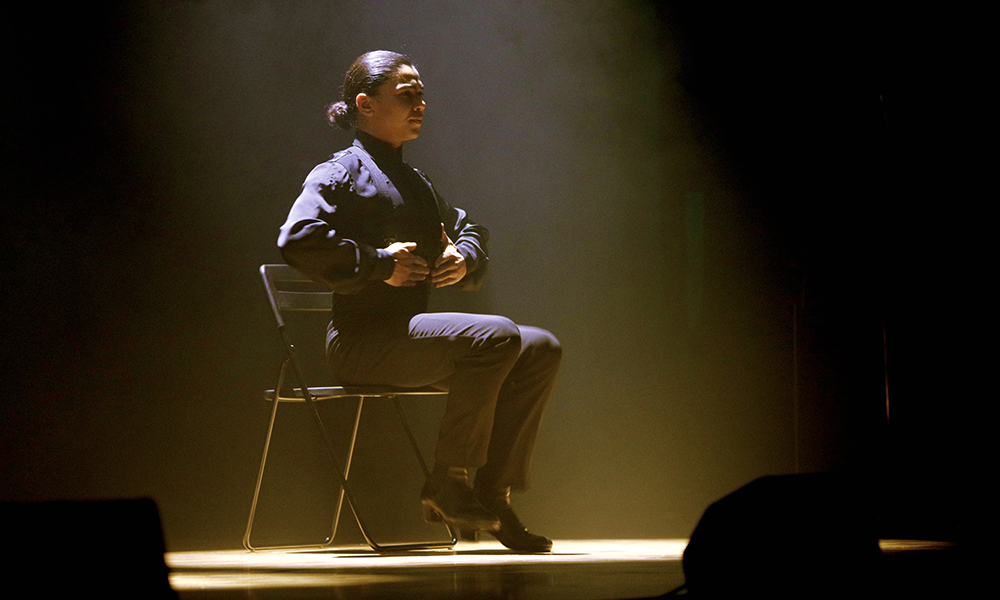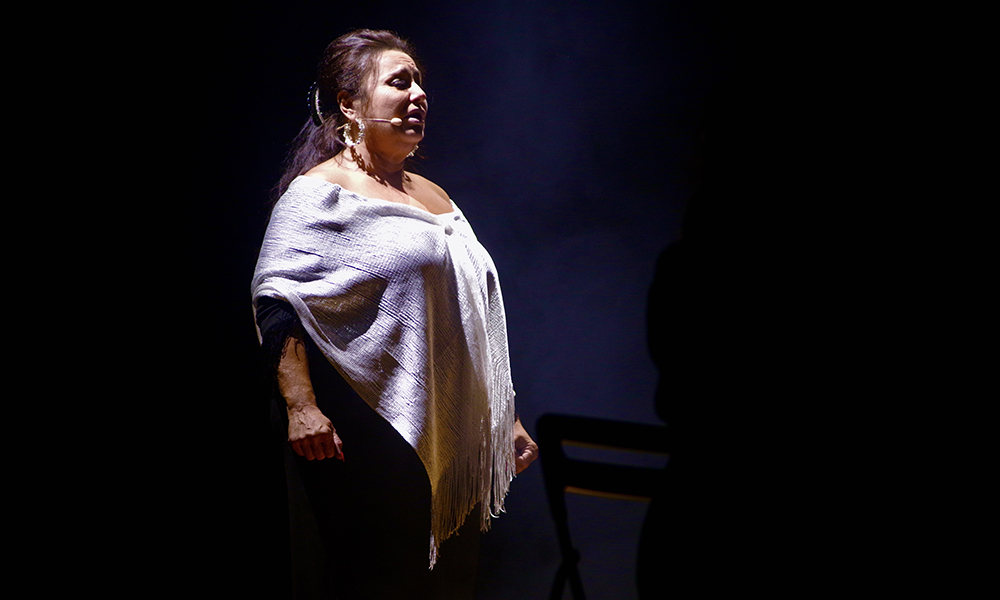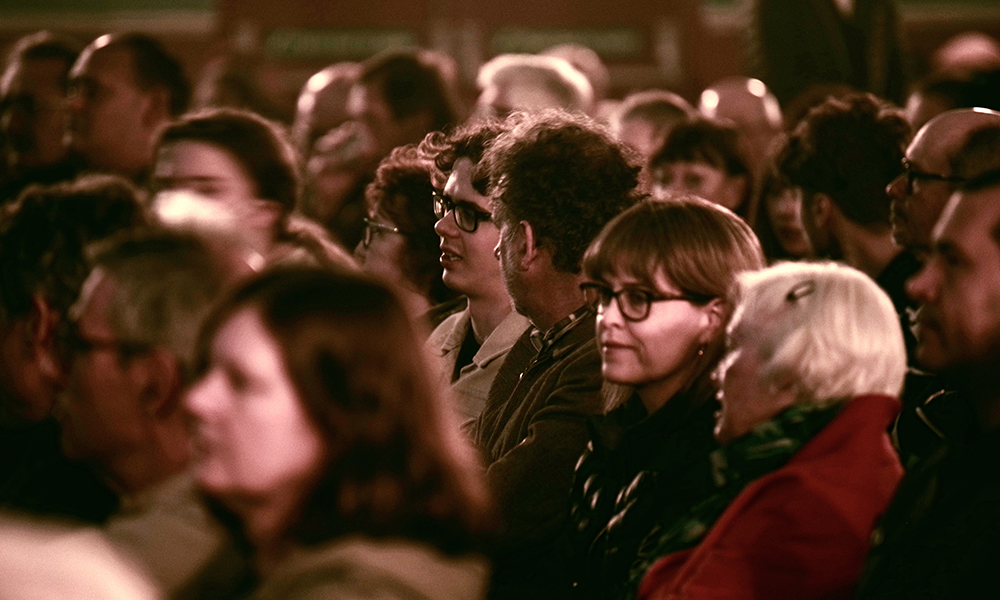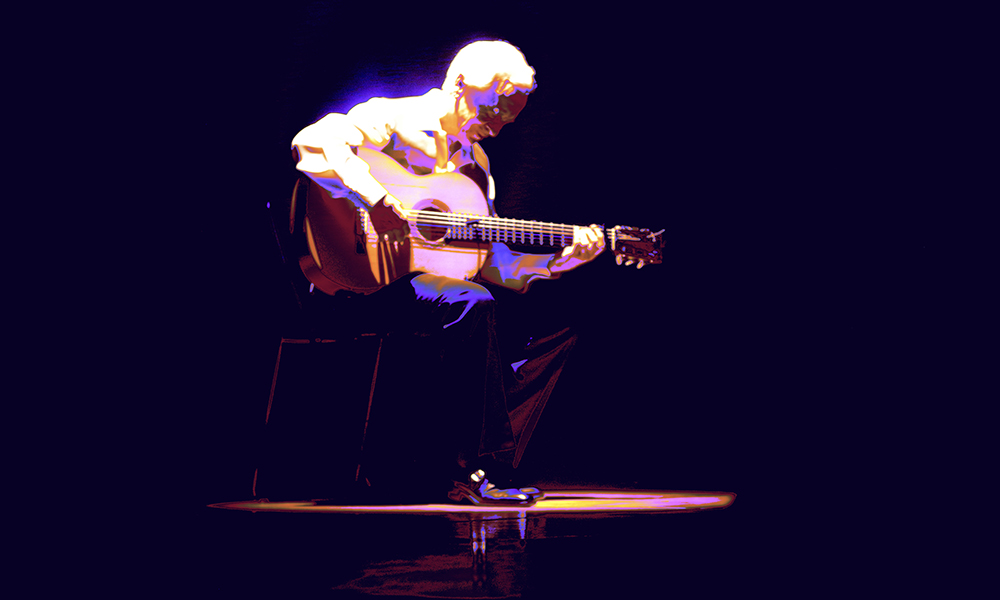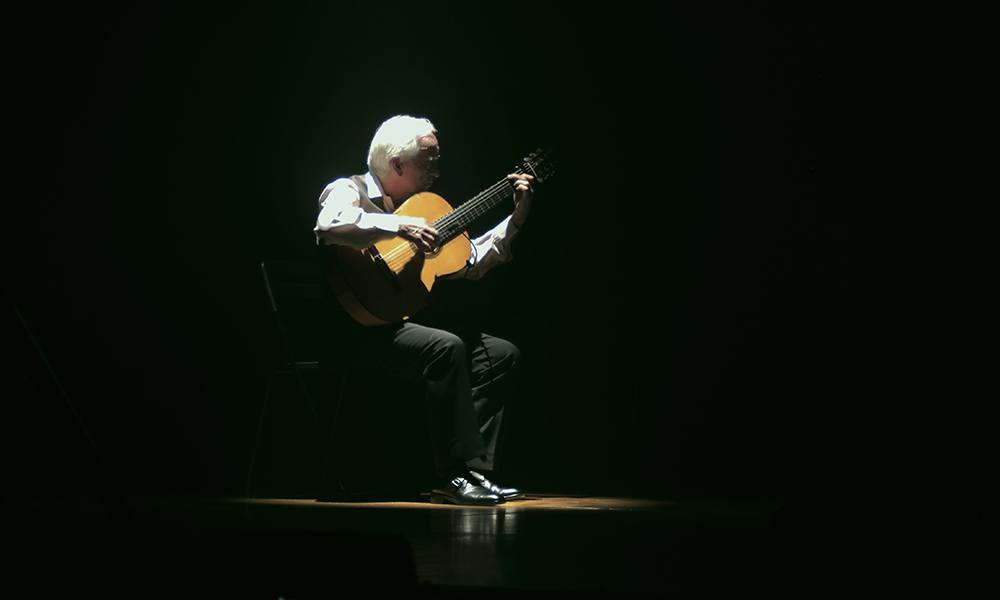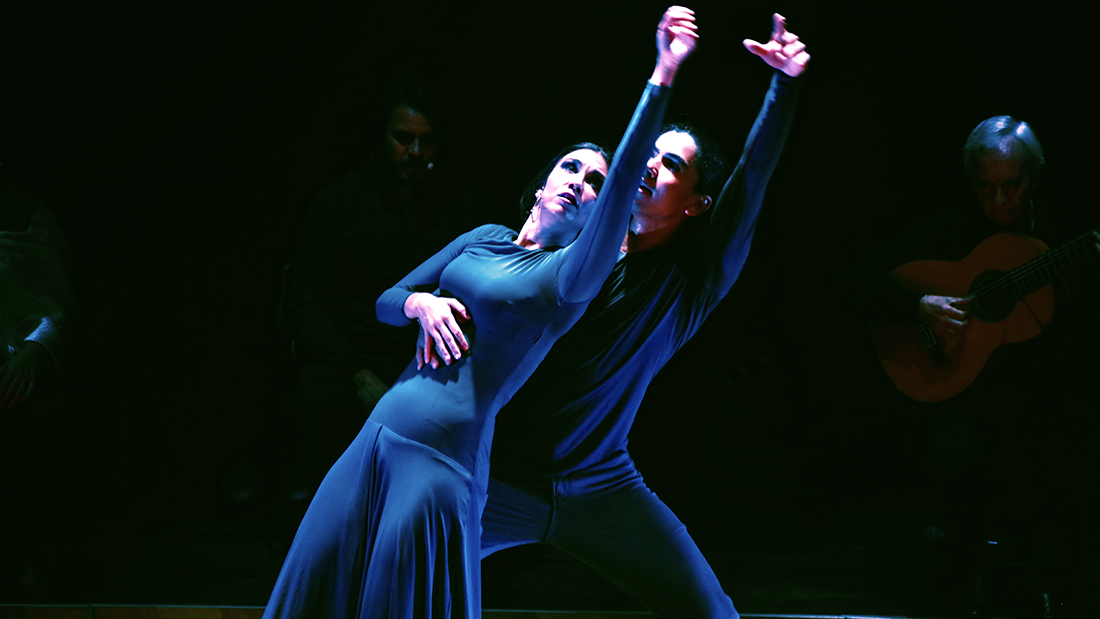
Review: Paco Peña at Astor Theatre
Paco Peña: Flamenco in Concert at Astor Theatre
Wednesday, July 26, 2023
“Flamenco is like the blues,” Paco Peña once famously said. “It has a tinge of sadness, an element of flight and rebellion. It is pain and suffering with explosions of great happiness.” All of these feelings were in full force at the Astor last week when Peña and his ‘cuadro’ (small ensemble) took to the stage.
Andalucian Paco Peña has been performing internationally for seven decades. Born in Cordoba in 1942, he first picked up the guitar at the age of six and made his professional debut at twelve. He moved to London in the mid-1960s where he still lives part of the year. He soon gained a reputation as a formidable force in flamenco guitar, attracting the attention and support of such luminaries as Julian Bream.
Peña composes most of what he plays but there is also a fair amount of improvisation. Although he started out performing solo, he is also a keen collaborator, what he likes to call ‘linking’ with other musicians. He has often moved outside the tradition to create innovative hybrid ‘links.’ He once famously appeared on the same bill as Jimi Hendrix and has collaborated with artists as diverse as guitarist John Williams and pop’s world-music aficionado Peter Gabriel. His preferred form though is ‘flamenco puro,’ pure flamenco. This is what he delivered at the Astor the other night. His touring cuadro comprised a male and female singer, a male and female dancer, a second guitarist and a percussionist.
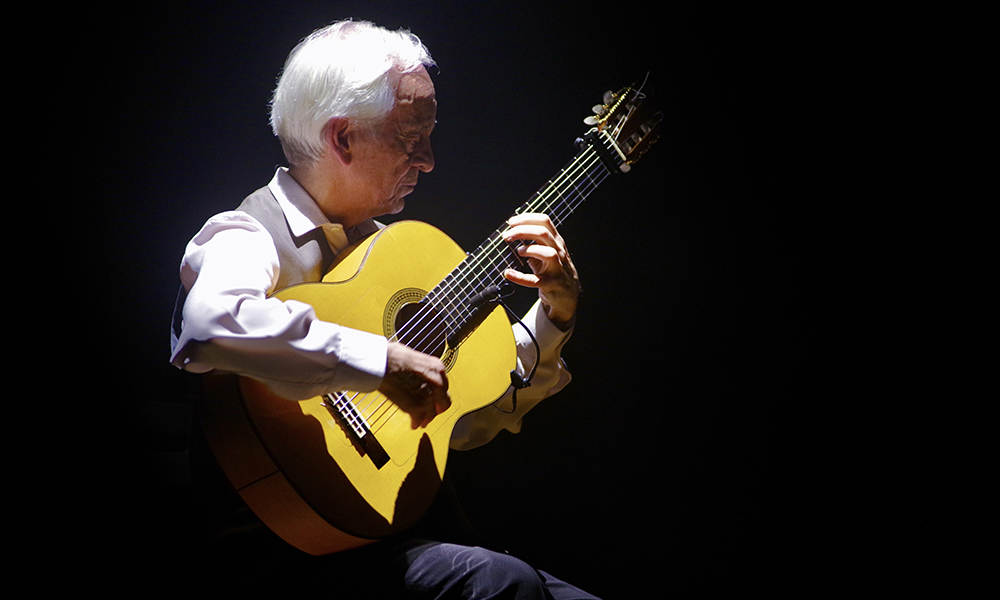
Paco Peña
The show began simply with Peña solo, seated stage centre in a single spot performing two soft but stunning flamenco pieces. Each built in intensity, a dynamic interplay of ‘picado’ bass runs, fast ‘rasquedo’ strumming, and high ‘tirando’ tremolo trills. The amazing thing is that he can do all three effortlessly at once, bass, rhythm and melody, just like the great classical guitarists.
Watching his mastery of the instrument, it is amazing to think that Peña had little formal training. Instead he learned at first from family and friends then later by listening to recordings of the great flamenco players and emulating their styles.
Midway through the third piece, the second guitarist quietly moved a seat onto the stage and joined him. The two counterpointed and sparred with more tirando trills and furious rasquedo strumming. For the next number, the percussionist joined them on cajón, a wooden box-like drum on which the musician sits and slaps the front and sides. At the centre point of the piece, the other four performers came on stage to stand behind the seated men. From there they enhanced the percussion by rhythmically clapping and stamping their feet.
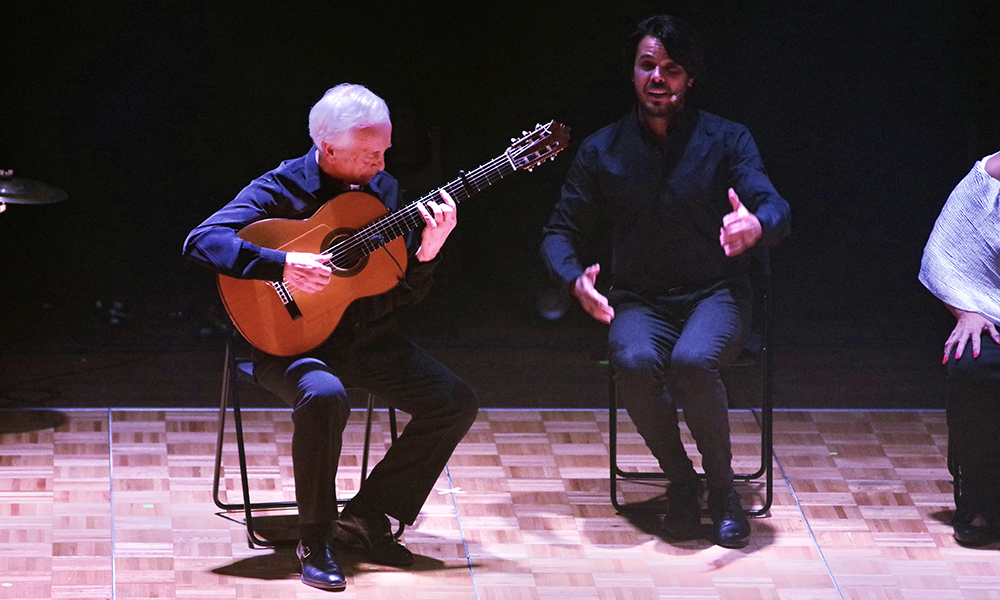
Paco Peña
On the next song, the finale of the first set, the spare stage came to vivid life as the ensemble took full flight. There was singing, the man and woman in turn bellowing through the room, and dancing in similar sequence, he in close cut black, she in a bright flowing pink frock, while the guitarists and drummer drove the rhythm. The song built into a fiery pas de deux, a passionate argument as only the Spanish can, then broke to an abrupt silence.
Perth has a generous community of flamenco followers, thanks in part to the long standing Danza Viva Spanish Dance Company. The community were out in force to see the world’s foremost flamenco guitarist put his ensemble through its paces. Spontaneous applause and passionate cries of ‘olé!’ and ‘Paco!’ punctuated the performance, not always at the most opportune moments.
The second half began in reverse of the first. There were no guitars just the singers, dancers and percussionist—this time playing a small kit. The first song, a strangely seated dance, emerged out of the darkness. The couple, both in black suits, mirrored each other’s every gesture. This was followed by another more conventional dance with the same grouping. It was the third number before Peña and his offsider returned to the stage.
It is a indication of his humility and dedication, that Peña can slip into the background like this. Although the show bore his name alone, he was not the star so much as the pivot around which the performance spun.
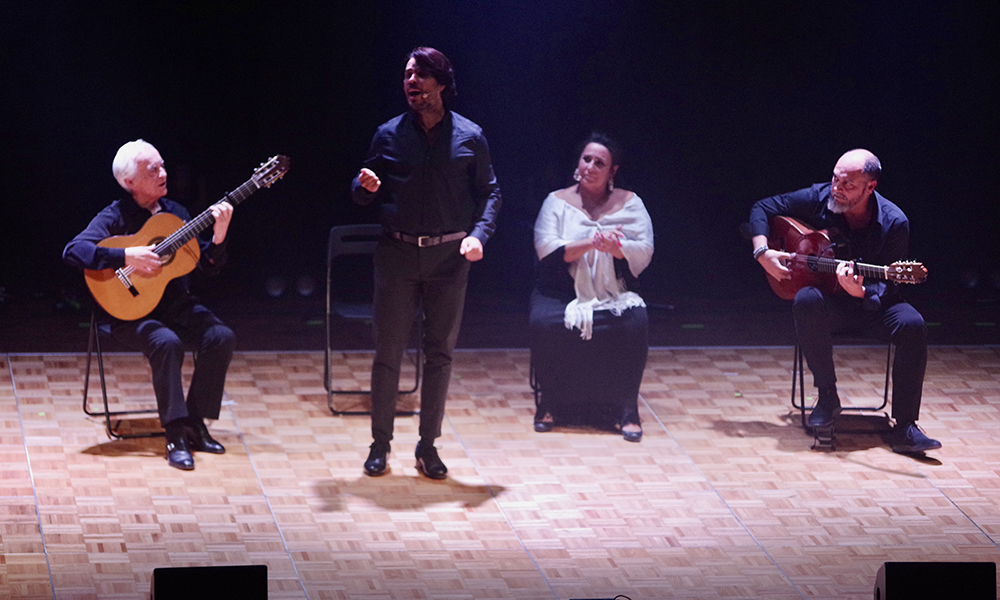
Paco Peña
On the final numbers the music moved from one feature to the next, each artist in turn holding the floor. On one, Peña first accompanied the fluid male dancer then segued to the second guitarist accompanying the flourishing female dancer before reaching a climax with all four playing together.
The extended pieces in the second half commenced with a solo, be it a dancer, a singer, the percussionist or one of the guitarists, then gradually the others would join in. In similar vein, the singers and dancers would commence each sequence as a solo, then pass onto the other before engaging in a duet or pas de deux. This form enabled each artist to literally strut their stuff and shine.
Flamenco dancing is elegant and proud. They stand tall and move with poise and grace, swinging their arms and stamping their feet in precise rhythms, not unlike a matador in the bullring or a tight tango. At times it did seem like we were at a bullfight, especially during the finale of the second set when the woman, dressed brightly in green, taunted her partner with her giant red and white cape.
At the end of this dance the audience sprang to their feet. “Bravo! Olé! Paco! Paco!" After an extended bow the cuadro struck up a final short number then gracefully danced their way, singing and playing, off stage.
Paco Peña’s Perth show was the start of a national tour. To acclimatise, the ensemble had spent the entire day, from 10 to 6, in rehearsal. The Astor management were amazed by their stamina. And it showed, their performance was sensational—passionate, fresh and tight—making for a lively and wondrous night.
IAN LILBURNE
Photos by Alan Holbrook

